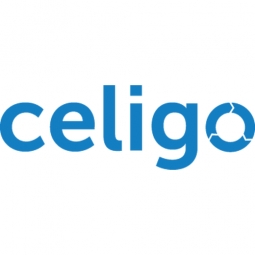Download PDF
Nuzest's Journey to Automate Order to Cash and 3PL Processes with Celigo
Technology Category
- Application Infrastructure & Middleware - Data Exchange & Integration
- Application Infrastructure & Middleware - Middleware, SDKs & Libraries
Applicable Functions
- Procurement
- Warehouse & Inventory Management
Use Cases
- Inventory Management
- Last Mile Delivery
Services
- System Integration
The Challenge
Nuzest Life, a provider of all-natural, plant-based nutritional supplements, faced significant challenges in managing its European operations. The European distributor for Nuzest Life products operated on razor-thin margins, making it crucial to find economies of scale to grow and be successful. The distributor's head, Bradon David, had purchased Netsuite to manage their ERP system, but the first challenge was integrating and automating their 3PL fulfillment systems. Another challenge was the multi-country requirements of Europe, such as multi-language, multi-currency, and multi-tax, coupled with a minimal workforce. The distributor needed to connect and automate various ecommerce websites with Netsuite to handle order to cash activities properly. These included eBay, Amazon, Shopify, and other local ecommerce channels like Allegro in Poland. Failure to address this would negatively impact the distributor’s profitability and hamper their ability to grow the business. The distributor initially used a prebuilt point-to-point connector for the 3PL/fulfillment integration, but it proved to be clunky, not enterprise-grade, and lacked flexibility.
About The Customer
Nuzest Life is a company that provides all-natural, plant-based nutritional supplements. The company was founded in 2005 and has its products scientifically researched and formulated in Australia. Nuzest has manufacturing facilities in Europe, Australia, and the US, and distributes its products worldwide. In Europe, the distributor chose to use Netsuite as its ERP system and paired up with an IT Integrator, GoLive Experts, to integrate with their 3PL and ecommerce websites like Amazon, eBay, and Shopify. The goal was to scale the business and provide Nuzest products to all European countries with a minimal number of employees.
The Solution
Nuzest was introduced to Celigo through their IT systems integration company, GoLive Experts. They suggested using Celigo’s iPaaS platform and connectors for quick and effective 3PL automations. Given the tight deadline, GoLive was able to work quickly using Celigo to develop, test, and automate the first 3PL custom integration flow using an SFTP connection between the systems. Next, they utilized the Amazon to Netsuite integration to automate orders, customer information, fulfillment, and pricing. The Amazon to Netsuite integration also helped keep their inventory levels in sync. Celigo played a key part in helping Nuzest Europe both grow and scale their business. It greatly improved Nuzest’s customer experience from sales order to fulfillment and made it possible for the business to have accurate inventory levels and data across all the ecommerce channels that their products are sold through. It helped them be more accurate with order processing and more efficient at bringing cash flow back into the business quicker and without manual intervention.
Operational Impact
Quantitative Benefit
Related Case Studies.

Case Study
Hospital Inventory Management
The hospital supply chain team is responsible for ensuring that the right medical supplies are readily available to clinicians when and where needed, and to do so in the most efficient manner possible. However, many of the systems and processes in use at the cancer center for supply chain management were not best suited to support these goals. Barcoding technology, a commonly used method for inventory management of medical supplies, is labor intensive, time consuming, does not provide real-time visibility into inventory levels and can be prone to error. Consequently, the lack of accurate and real-time visibility into inventory levels across multiple supply rooms in multiple hospital facilities creates additional inefficiency in the system causing over-ordering, hoarding, and wasted supplies. Other sources of waste and cost were also identified as candidates for improvement. Existing systems and processes did not provide adequate security for high-cost inventory within the hospital, which was another driver of cost. A lack of visibility into expiration dates for supplies resulted in supplies being wasted due to past expiry dates. Storage of supplies was also a key consideration given the location of the cancer center’s facilities in a dense urban setting, where space is always at a premium. In order to address the challenges outlined above, the hospital sought a solution that would provide real-time inventory information with high levels of accuracy, reduce the level of manual effort required and enable data driven decision making to ensure that the right supplies were readily available to clinicians in the right location at the right time.

Case Study
Hardware Retailer Uses Data Warehouse to Track Inventory
Ace tracked which products retailers ordered, when they were ordered and shipped. However, the company could not track or forecast actual sales. Data used for reporting was up to a one-week old, owing to performance and data cleansing issues. Requirement to integrate wholesale and inventory data with POS data to help drive key business decisions, improve category management, lower inventory costs and optimize pricing. Reliance on custom coding to integrate POS data was excessively resource intensive and led to major performance constraints.

Case Study
Remake Enterprise-to-production System
The client was running a legacy material flow tracking system and wanted to replace the system with a more effective one as the system was increasingly expensive to maintain and support and also was not extendable. The client's IT landscape was filled with modern applications and it was difficult to interface the material flow tracking system with modern applications.

Case Study
Expertech - Capital Tool Inventory
Costly tools used to splice fiber optic cables are an important part of Expertech’s operational and capitalized expenses, but the company did not have an automated system in place to track their tools and optimize their usage. The existing data in its tracking system was inaccurate and required manual updating, making it essential for the company to implement an efficient process to track and follow up on its capital tool inventory.







